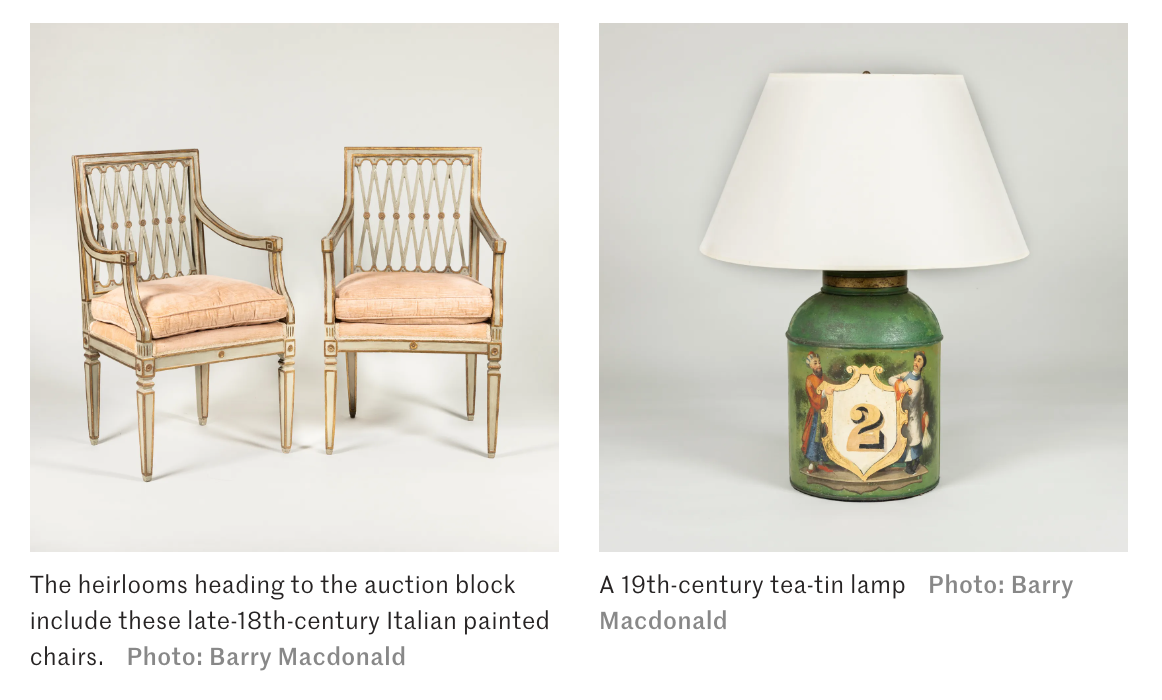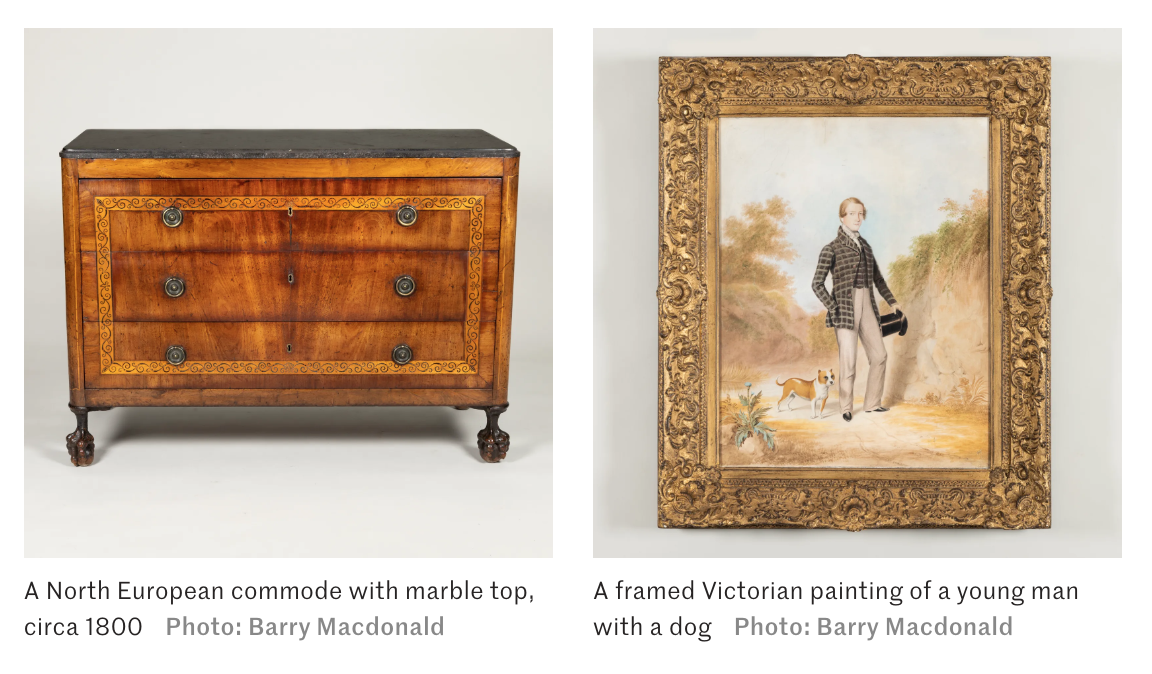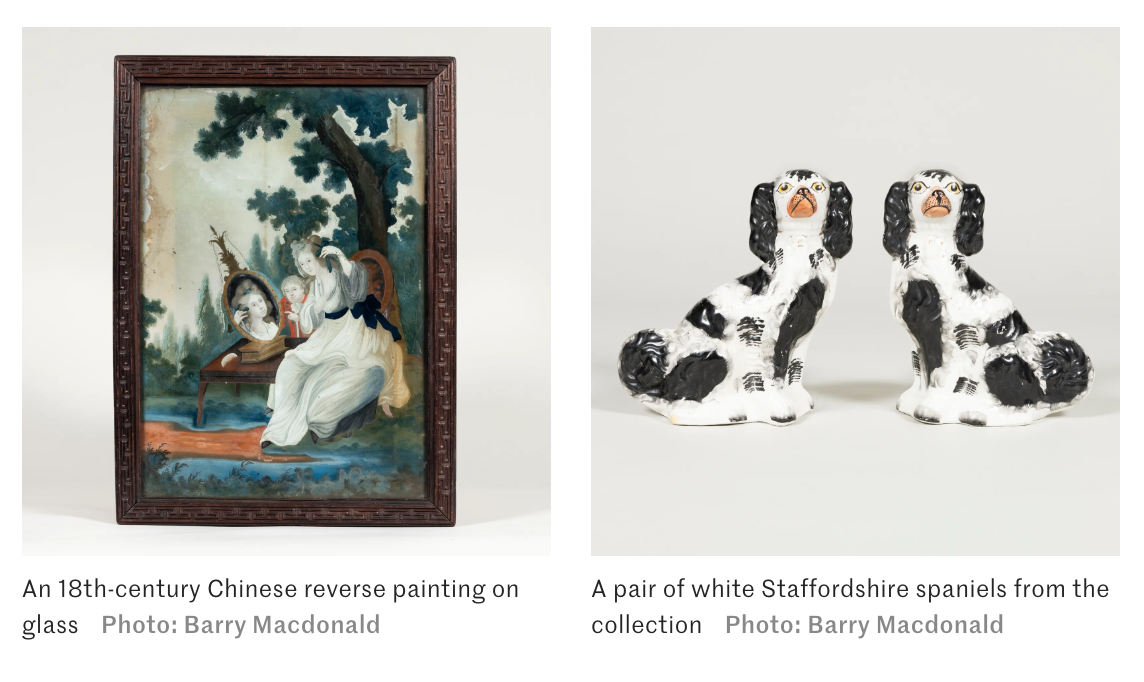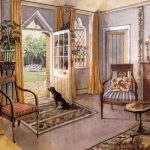Obsessed With English Country House Style? This Antique Auction Is for You
Treasures once belonging to decorator John Fowler are being offered by Imogen Taylor, a former partner at Sibyl Colefax & John Fowler, along with other priceless items
It’s every decorator’s dream to be gifted antiques from the visionaries who came before and paved the way for their artistry. In the case of Imogen Taylor, who worked at Sibyl Colefax & John Fowler for half a century, Fowler bestowed dozens of antiques upon her in his itemized will. “He knew I had a very empty flat at the time,” says Taylor, who first joined the legendary British firm in 1949.

Now, the 96-year-old decorator, who worked her way up from Fowler’s assistant—a position she held for 17 years—to firm partner, has decided to part with her belongings in a selling exhibition at Sibyl Colefax & John Fowler’s Pimlico Road showroom from December 2–22. (The full lot listing will go live on the firm’s website at 9:30 A.M. GMT on December 2.) Of the 100-plus antiques on offer, more than 30 once furnished the Hunting Lodge, Fowler’s 18th-century Hampshire residence, where he lived from 1947 until his death in 1977. Among the framed pictures, ceramics, chairs, and other furnishings in the offering (titled “The John Fowler & Imogen Taylor Collection—A Selling Exhibition”), Taylor says her favorites are a circular Biedermeier table and six Italian chairs: “They hold such wonderful memories of delicious meals around them at the Hunting Lodge.” Upon her retirement in 1999, Taylor purchased a small medieval home in Burgundy that housed the Hunting Lodge treasures, as well as other personal belongings to be included in the sale.

Taylor was one of several of Fowler’s friends lucky enough to receive items from the Hunting Lodge, which she says “was a thrill to visit.” “It was so lovely to look at and was full of comfort and good food and laughter and friends, and the garden was a delight,” she recalls. Such friends included film fixtures, like the Redgraves and Vivien Leigh, fashion designer Hardy Amies, and photographer Horst P. Horst, who shot the house in 1965. “Of course, one was a bit on edge too, as he was [my] boss. He was very critical and demanding, so [I] was always on [my] best behavior.”
It’s thanks to Fowler’s discerning eye and partnership with American heiress Nancy Lancaster, who bought Lady Sibyl’s share of the business in the 1940s, that the English country house aesthetic rose to prominence. Fowler and Lancaster would go on antique-buying business trips, retaining a select amount for their own properties—both their clients’ and their own abodes reflect the ease and eclecticism of the English country house style, which privileges the unpretentious, the collected yet comfortable. It’s a look that grand homes have inherently acquired after generations of family members inhabited them, each adding elements of their day. Fowler and Lancaster mastered the difficult-to-achieve look of having homes appear as authentically aged. Even Deborah Cavendish, Duchess of Devonshire, once called Fowler “the prince of decorators.”

“He took his inspiration from the past using antiques, traditional color techniques, and ways of applying paint, plus upholstery and curtain styles from the 18th and 19th centuries,” says Taylor of Fowler’s genius, which has inspired a resurgence of pattern and color, as well as antiques and classical fabrics, even today. Decorator Taylor firmly believes her mentor’s influence is here to stay: “There are many who love his legacy and still live in the way he lived with pretty things everywhere—books, flowers, comfortable furniture, wonderful colors,” she says. In bringing her rare personal gifts from Fowler to market, Taylor gives these antiques an opportunity to resonate with yet another generation of decorators, historians, and design enthusiasts. “His style was not a fashion,” she says, ”just a way of life.”


